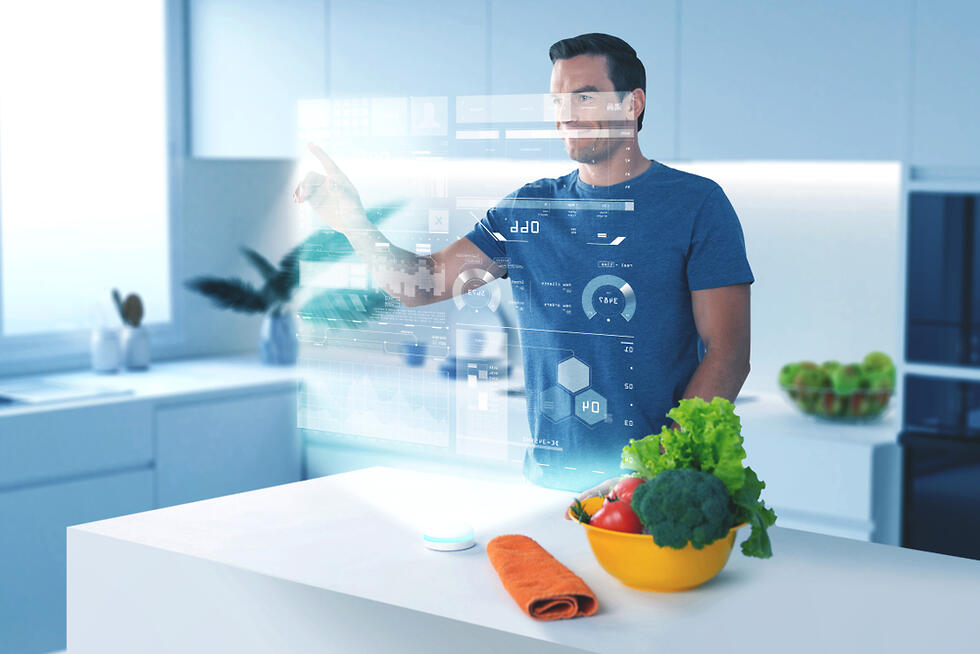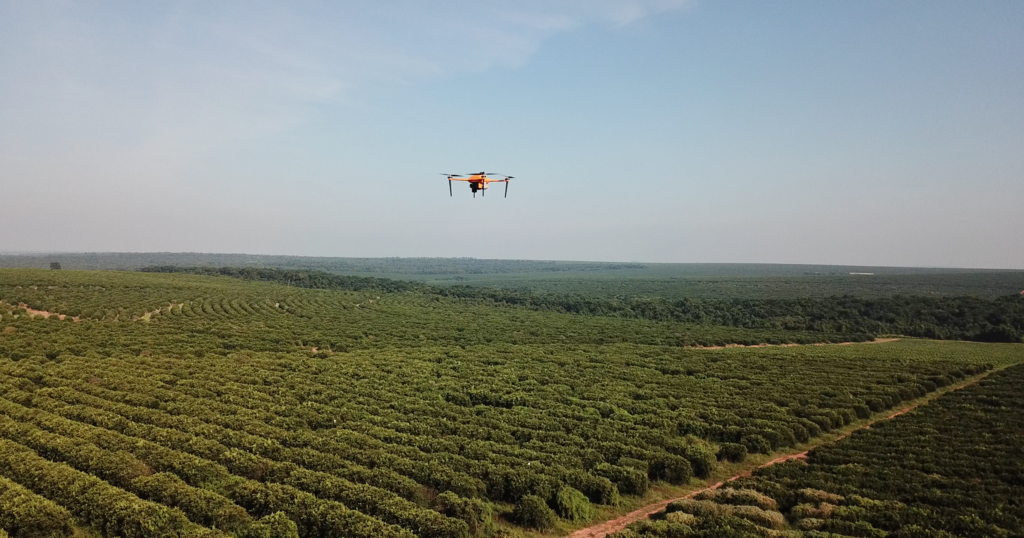Throughout history, technology has played a vital role in shaping our lives, from basic tools like fire to sophisticated computers. While some argue that technology disconnects us from nature, it is also the means by which we improve our lives, whether through advanced weaponry for hunting or essential medical advancements like vaccines. Today, technology has progressed immensely, offering assistance and even potential replacements for various tasks. In the realms of scientific research and economics, we continuously seek the next breakthrough, investing in promising technologies that will soon benefit the masses or those in need.
The World Economic Forum conducted a study in 2022, surveying prominent academics worldwide, and recently published the results highlighting eight out of ten technologies expected to significantly impact our lives and the economy in the near future. While quantum computers, virtual reality, and artificial intelligence are included, they are not mere buzzwords. The list also encompasses flexible neuron-based electronics, resembling those in our brains, as well as bacteria-attacking viruses.
Flexible Batteries
Power supply remains a significant challenge for devices and gadgets. While lithium-ion batteries have enabled miniaturization, they still face limitations due to their heavy and metal/plastic composition. As we envision computers embedded in clothing or foldable smartphone screens, flexible batteries have the potential to address these issues and offer promising solutions.
Flexible batteries hold the potential to revolutionize various technologies, enabling the development of screens that can be rolled-up and smart clothing capable of monitoring health. By utilizing lightweight and thin materials, these batteries offer enhanced energy efficiency and convenience. This advancement allows for compact computers that can be rolled out on any table, pocket-sized smartphones, and virtual reality glasses that resemble regular eyewear. While the market for flexible batteries is still relatively small, major technology companies such as Apple, LG, Samsung, Nokia, and STMicroelectronics are actively involved in their development, showcasing its promising future.
Generative Artificial Intelligence
Generative artificial intelligence, an emerging field of AI, is transforming various industries by producing original content. While its current applications focus on generating texts, images, sounds, and software, its future potential includes drug development, architecture, and mechanical engineering. Researchers have already conducted experiments in creating disease-specific drug molecules, designing houses, and assisting NASA engineers in spacecraft development.
Beyond space and construction, generative AI will enhance food production, everyday product design, and brain research. Students already benefit from its capabilities, but educational institutions face challenges in integrating it. With responsible control and regulation, creative AI can provide us humans with more time to innovate and shape a better future.
Eco-friendly Jet Fuel
It is indeed concerning that flights contribute 2-3% of global carbon dioxide emissions annually, amounting to approximately 39 gigatons of pollution from 2022 to 2050. While electric cars and drones show promise in reducing emissions, the development of efficient electric passenger planes remains a challenge that may take decades to overcome. The high costs of aircraft and the need for airlines to utilize their existing fleet until depreciation further complicate the replacement process. However, a viable solution lies in altering the composition of aviation fuel to minimize harmful emissions and mitigate environmental impact.
The adoption of sustainable jet fuel, derived from organic or alternative sources, is a crucial step in reducing the aviation industry's carbon footprint. By combining this fuel with strategies such as optimizing flight routes, implementing new technologies, and mitigating emissions, significant progress can be made.
Currently, sustainable fuel accounts for approximately 1% of global flights, but the aim is to increase its usage to 13% to 15% by 2040. To achieve this target, plans are underway to establish around 400 sustainable fuel production plants in the coming years. The production of sustainable fuel has already tripled in the past year, reaching 300 million liters, indicating that flying could potentially become a much more environmentally friendly mode of transportation in the near future if this trajectory continues.
Engineered Friendly Viruses
To address the issue of bacterial resistance to antibiotics, scientists are exploring the use of technology involving designed viruses that target bacteria. These viruses, known as bacteriophages, have the ability to selectively infect and kill specific bacteria, offering a potential solution to combat infections without harming beneficial bacteria in our bodies.
Building on the knowledge gained from dealing with viruses during the recent COVID-19 pandemic, researchers are leveraging the efficiency of viruses in transferring genetic material to cells for potential therapeutic applications in the field of microbiome health. By harnessing this technology, there is hope for developing targeted treatments that can address bacterial infections more effectively while preserving the balance of our microbiome.
Phages, or bacteriophages, can be utilized to deliver targeted genetic pesticides to specific bacteria, allowing for precision treatment that spares beneficial bacteria. This personalized approach to fighting bacterial infections holds promise in the field of microbiome health. Researchers are making progress in developing phages that can combat specific strains of bacteria, such as E. coli causing hemolytic-uremic syndrome. The success in this area has attracted investments, and numerous biotech companies are now involved in the development of phages to address antibiotic resistance and reduce the virulence of harmful bacteria.
Mental Health Metaverse
While the concept of the metaverse may evoke images of virtual reality gaming and futuristic glasses, its potential extends far beyond entertainment. In the context of mental health, the metaverse holds promise for addressing the growing crisis exacerbated by the COVID-19 pandemic. Social isolation and loneliness experienced during lockdowns have contributed to increased risks of depression and psychosomatic illnesses.
Leveraging the metaverse technology, innovative approaches can be developed to provide support, therapy, and interventions for mental health conditions, ultimately promoting well-being and preserving our mental state. Mark Zuckerberg's rebranding of Facebook as Meta reflects the recognition of the metaverse's potential beyond advertising, highlighting its broader implications for meaningful applications in various areas, including mental health care.
The gaming industry has emerged as a powerful tool in the battle against depression, leveraging its interactive and immersive nature. Companies like DeepWell, Ninja Theory, and Tripp are at the forefront of using gaming technologies for therapeutic purposes. DeepWell's platform is specifically designed to address depression and anxiety symptoms, while Ninja Theory's collaboration with the University of Cambridge aims to create a therapy environment called the Insight Project.
Additionally, Tripp has developed a meditation app that utilizes gaming elements. Emerging technologies like Emerge Wave 1 and Neurable headphones further enhance the immersive experience by simulating real contact and measuring emotional intensity, respectively. These advancements showcase the potential of the gaming industry in fostering mental well-being and supporting therapeutic interventions.
Wearable sensors for Plants
The integration of technology in agriculture, often referred to as agrotech or pharmatech, continues to revolutionize one of humanity's oldest activities. With the goal of meeting the increasing food demands driven by population growth, farmers are embracing innovative methods to enhance crop monitoring and productivity.
Traditional approaches such as soil tests and physical inspection of fields are now supplemented with advanced tools like drones, robotic tractors, and satellite imagery. The next frontier involves attaching sensors to individual plants, enabling precise data collection and analysis for optimized cultivation. This data-driven approach holds great potential for improving agricultural practices and ensuring sustainable food production in the future.
Indeed, the integration of sensors in agriculture holds immense potential for increasing crop quantity and quality while optimizing resource usage. By attaching sensors to plant stems, farmers can gather valuable data on crucial parameters such as temperature, humidity, moisture, and nutrient levels. This real-time information empowers farmers to make informed decisions on irrigation, fertilization, and pesticide application, leading to precise and efficient resource management. The ability to monitor and respond to individual plant needs can result in healthier crops, higher yields, and reduced costs.
Israel's Phytech company is already at the forefront of this technology, offering sensors that have gained recognition worldwide. However, it is important to note that the widespread adoption of this technology across global agricultural practices may require further advancements and refinements. As the field continues to evolve, efforts will be made to make such sensor-based solutions accessible and affordable to farmers worldwide, ultimately contributing to improved agricultural productivity and sustainability on a global scale.
Spatial Omics
Indeed, omics and spatial omics technologies have revolutionized the study of cells and molecular interactions, opening up new possibilities for understanding the complexities of biological systems. Omics refers to the comprehensive analysis of molecules, cells, and their interactions, encompassing various disciplines such as genomics, proteomics, and metabolomics. Spatial omics takes this a step further by enabling the visualization and mapping of cellular relationships within tissues.
By employing spatial omics techniques, researchers can obtain detailed insights into the spatial organization and activities of cells within complex biological systems. This technology allows for the translation of cellular data into visual representations such as images or diagrams, facilitating the study of cellular processes and their regulation. It provides a means to analyze and interpret cellular activities with unprecedented resolution, enabling a deeper understanding of cellular functions and their roles in health and disease.
The applications of spatial omics are diverse, but one prominent area is genetic engineering. With this technology, it becomes possible to accurately and automatically insert genes into different cells and monitor the resulting changes. By visualizing cellular activity at a highly detailed level, researchers can gain insights into the effects of genetic modifications and track cellular responses over time. This advancement in understanding cellular behavior holds great promise for various fields, including biomedical research, drug discovery, and personalized medicine.
Flexible Electronic Neurons
Elon Musk's company, Neuralink, is currently working on the development of a brain-machine interface (BMI). This technology aims to establish a direct connection between the brain and a computer, allowing individuals to control the computer directly with their brain signals. Similarly, it has the potential to enable the computer to interact with and control specific functions within the human body. The process involves the use of sensors that capture electrical signals from the brain and algorithms that translate these signals into instructions that can be understood and executed by a computer. In addition to computer control, this technology holds promise for addressing neurological conditions like epilepsy and providing amputees with the ability to control artificial limbs.
Currently, one of the challenges in the field of electronic components is their compatibility with the human body, which is soft and flexible in nature. Traditional components such as chips, wiring, and sensors are typically made from rigid materials that are not easily integrated with biological systems. However, the emergence of flexible neurons offers a promising solution. These thin and flexible electrical components can be seamlessly incorporated into living organisms.
Imagine the potential benefits for individuals with heart conditions who require pacemakers. Instead of using rigid devices, flexible neurons could be utilized to create pacemakers that are more compatible and gentle on the body. By employing these flexible materials in electronic components, it becomes possible to achieve better compatibility and integration with biological systems. This opens up new possibilities for the development of advanced medical devices and technologies that can enhance the quality of life for individuals in need.
Sustainable Computing
The increasing usage of cloud computing, whether in public data centers or by tech giants like Microsoft, Google, or Meta, accounts for approximately 1% of global electricity consumption annually. This percentage is projected to rise in the future. While there is no single solution, various technologies can significantly decrease energy consumption and make it more sustainable. For instance, liquid-based cooling can replace inefficient industrial air conditioners to cool servers. Additionally, excess heat generated from regular operations can be repurposed, such as for heating houses in cities like Stockholm, Sweden.
Artificial intelligence also plays a role by analyzing data center activity and optimizing it. DeepMind, a British company owned by Google, developed such a system that reduced Google's energy consumption by approximately 40%. Other solutions involve modular data centers equipped with energy production systems that utilize methane gas, known for its high pollution potential. Rather than releasing the gas into the atmosphere, it is utilized as a fuel for electricity generation, reducing emissions. These and other advancements in storage, production, and infrastructure management technologies are expected to bring the industry closer to the goal of achieving near-zero pollutant emissions.
AI-Based Healthcare
AI companies are focused on developing systems that aid doctors and therapists in making timely and precise therapeutic decisions. While this technology is not entirely novel – IBM's attempt to transform its AI platform, Watson, into a doctor did not yield significant success – recent advancements in the field have demonstrated that AI can be effectively integrated with existing platforms. By collecting data and therapeutic insights, these systems can be trained to enhance the diagnosis, prevention, and treatment of various diseases, including those that are considered rare and challenging to identify.
The integration of artificial intelligence extends beyond treatment and encompasses the management of healthcare systems themselves. The current expectation is that incorporating AI systems into healthcare providers' infrastructure will enhance the quality of patient care. This includes optimizing processes, reducing waiting times, and improving overall healthcare system management.
A notable example is Medical Confidence, a company owned by the Canadian healthcare giant CloudMD, which utilized AI technology to efficiently connect patients with available doctors and treatment centers, resulting in a significant reduction of appointment wait times from months to weeks. The utilization of these methods in developing countries, such as India's decision to integrate AI into their local healthcare systems, is expected to greatly improve residents' access to healthcare services.








